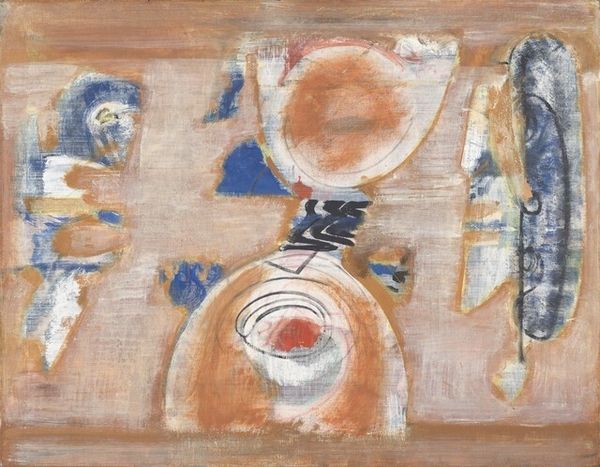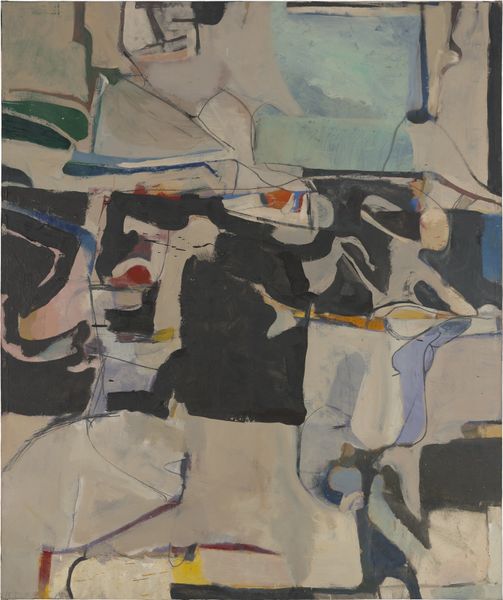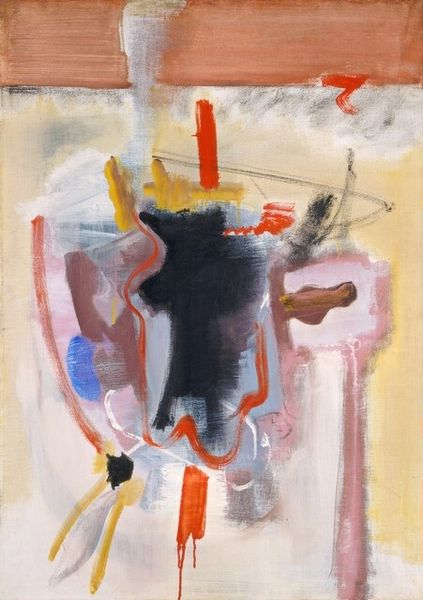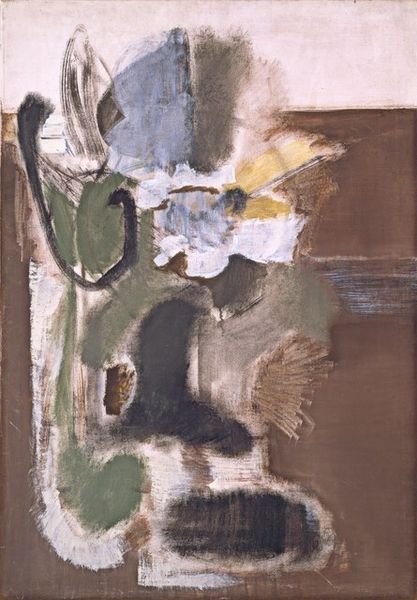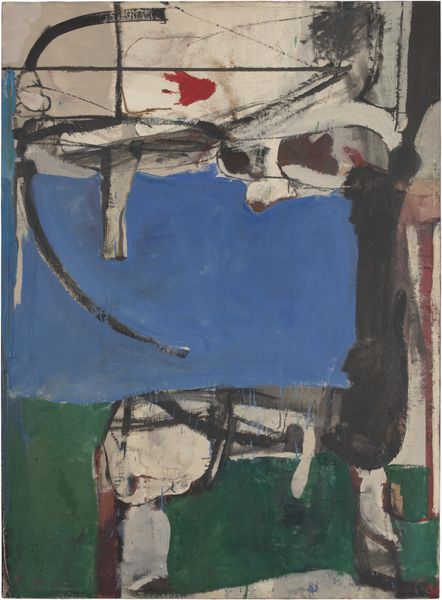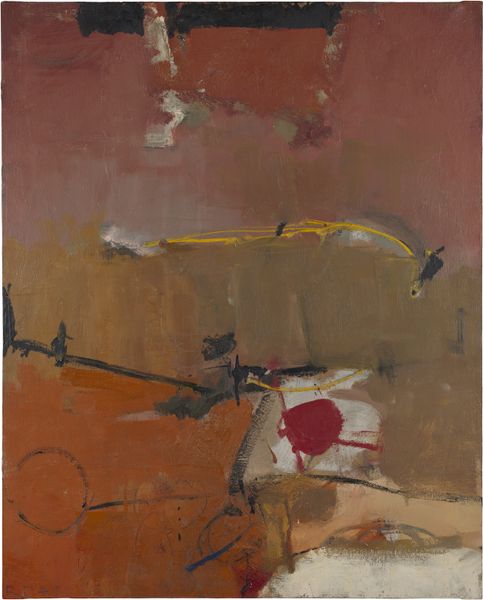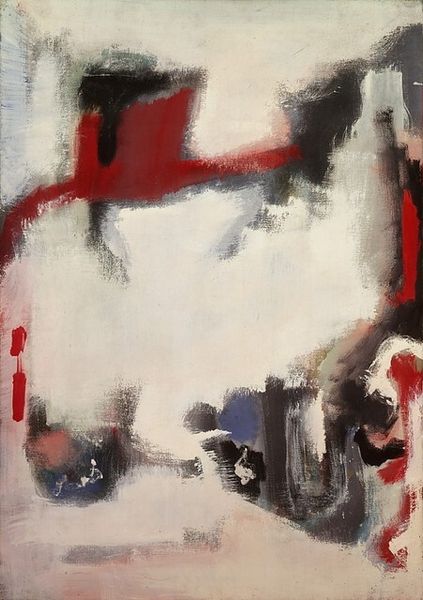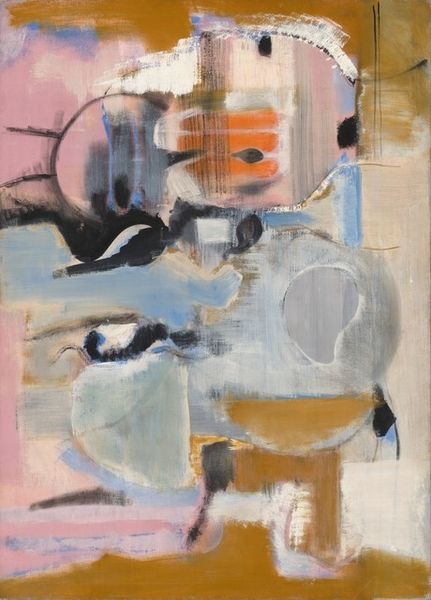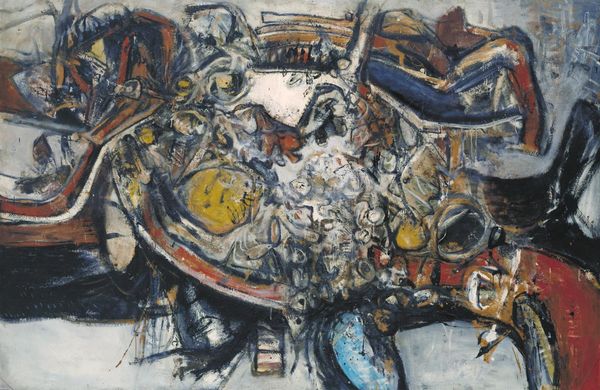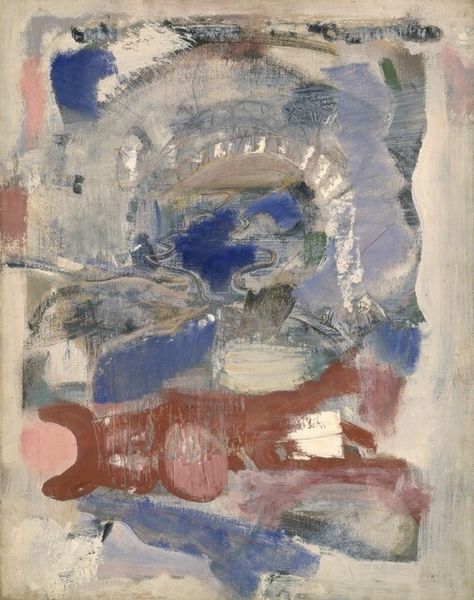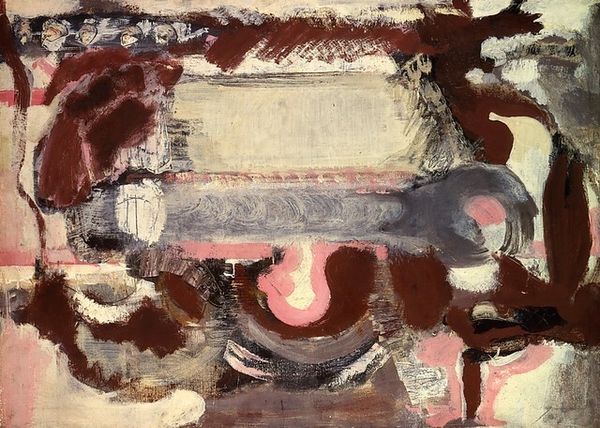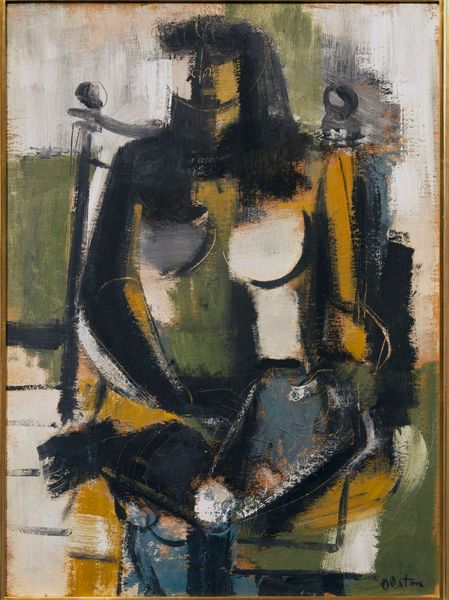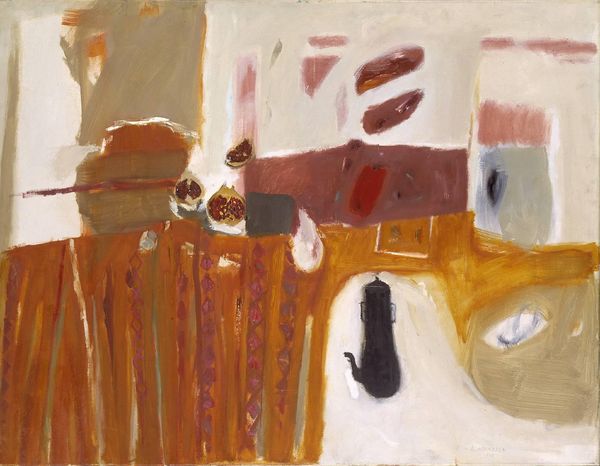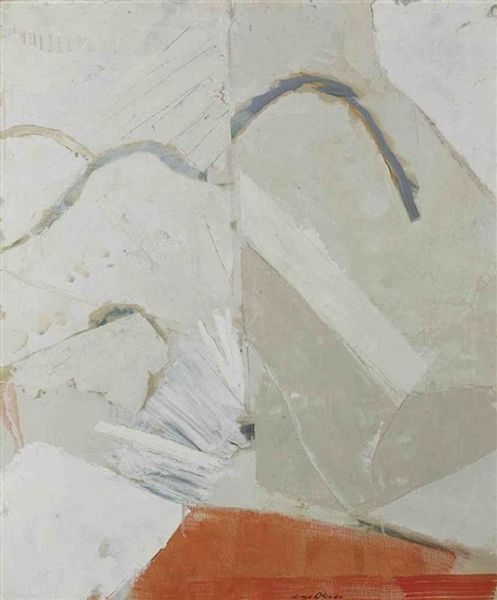
painting, oil-paint
#
abstract-expressionism
#
organic
#
abstract painting
#
painting
#
oil-paint
#
form
#
abstraction
#
modernism
Dimensions: overall: 92.1 x 122.2 cm (36 1/4 x 48 1/8 in.) framed: 100.7 x 131.1 x 9.5 cm (39 5/8 x 51 5/8 x 3 3/4 in.)
Copyright: National Gallery of Art: CC0 1.0
Editor: This is Mark Rothko's "Aquatic Drama" from 1946, an oil painting. It feels almost biomorphic, like looking at underwater organisms. I'm struck by how Rothko applied the paint – it seems almost scrubbed onto the canvas in places. What do you see when you look at this work? Curator: Considering this painting through a materialist lens, the oil paint itself becomes a key protagonist. Rothko’s method of application – that “scrubbed” effect, as you say – speaks volumes about the artistic labor involved. Notice how the paint isn’t used to create illusions, but rather calls attention to its own physicality and texture. The process of applying and layering these pigments, from a 1940s American perspective, rejects traditional academic techniques in favor of exploring the very stuff of art itself. Editor: That’s interesting, the idea of the material itself being the subject. I hadn’t thought of it that way. So the "aquatic drama" isn’t necessarily a depiction of anything literal? Curator: Precisely. The “drama” lies in the interplay of materials. Think about what was happening post-World War II. The availability, cost, and cultural understanding of these manufactured materials—oil paint, canvas—were all evolving rapidly, mirroring shifts in labor practices and consumption patterns. How does this awareness impact our understanding of the artwork? Editor: So, looking at it now, the overlapping shapes and colours become less about representing something and more about the physical relationship of these manufactured materials with each other… Curator: Exactly! And the scale? How does the artwork's size influence your engagement with its material presence? Editor: I see how the size might invite closer inspection of brushstrokes, pigment density... it's about the interaction. It’s fascinating to think about the social and economic factors that shaped the availability and use of those materials. Curator: Indeed. Shifting our focus toward the art-making materials encourages contemplation of these systems beyond conventional interpretations.
Comments
No comments
Be the first to comment and join the conversation on the ultimate creative platform.
